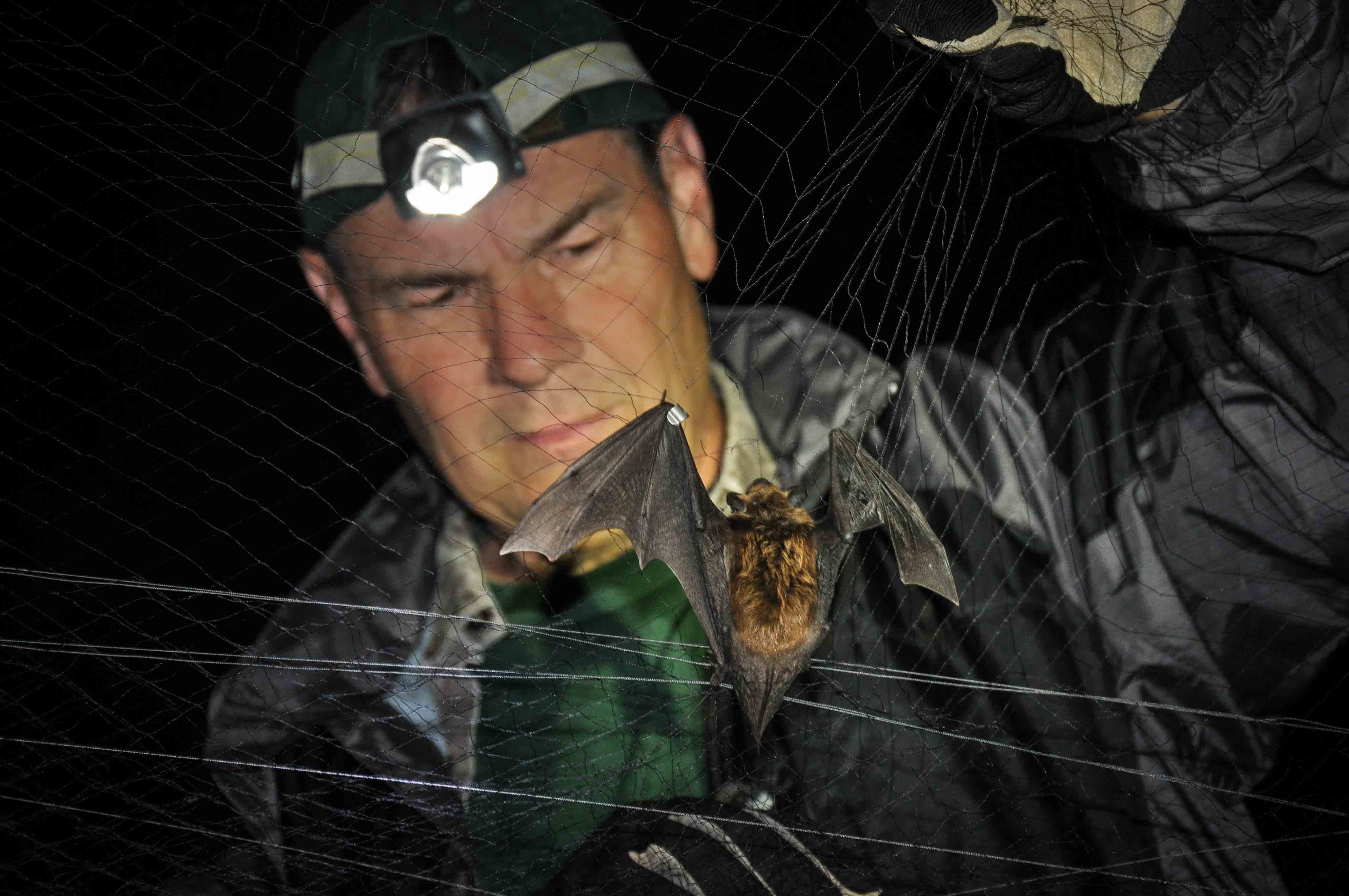
Fish & Wildlife Department biologist Scott Darling surveys a big brown bat captured in a mist net. White-nose syndrome has caused the severe decline of several species of cave-roosting bats in Vermont since the disease first hit Vermont in 2008. Photo by Tom Rogers, Vermont Fish & Wildlife Department.
Although Vermont’s populations of cave-dwelling bat species continue to drastically shrink in number every year, the rate of decline may be slowing down. Biologists with the Vermont Fish & Wildlife Department are working to determine if some individuals that remain are naturally resistant to the syndrome that has killed millions of bats to date.
Fish & Wildlife bat project leader Scott Darling hopes to determine if there is anything that can be done to prevent further declines in bats before it is too late for some species.
“We’re observing the most precipitous decline of a group of species in recorded history and it’s happening right here in our region,” said Darling. “Several species, such as northern long-eared bats, have virtually disappeared in less than a decade and we are getting increasingly skeptical that they will ever be able to rebound.”
To determine which bats continue to survive, department staff captured little brown bats last fall and fit them with tiny radio tags. They hope to find out what proportion of them survives after another winter in an infected cave.
State scientists also hope to determine if some bats are actually surviving multiple years hibernating in caves contaminated with the fungus that causes white-nose syndrome, or if new bats from other caves are simply replacing the old ones as they die off.
Bats normally remain in the hibernacula until spring, when temperatures are warm and insects are available to eat. Bats infected with white-nose syndrome become extremely dehydrated and emaciated, often flying out of the cave mid-winter in search of food and water. These bats face an almost certain death in the absence of insects or open water in mid-winter.
In addition to this research, last winter Vermont Fish & Wildlife staff teamed up with researchers from New York State Department of Environmental Conservation and the U.S. Fish & Wildlife Service in an experiment to see if bats infected with white-nose syndrome could survive in an artificial cave that was free of the fungus. The researchers transported 30 hibernating little brown bats to a former military bunker on Aroostook National Wildlife Refuge in Maine.
Nine bats survived the experiment, which was encouraging given the low survival rates of infected bats in natural conditions. “We’re looking at ways to increase survival of future groups so we’ll be better prepared if this strategy becomes necessary,” said Darling.
“The struggle to save Vermont’s bats continues to be a race against time,” said Darling. “If we’re not successful with these efforts, it’s unclear what actions we’ll turn to next.”
Vermont has nine species of bats, of which six spend the winter hibernating in caves. Vermont listed northern long-eared bats and little brown bats as endangered in 2011 and added tri-colored bats in 2012. The U.S. Fish and Wildlife Service listed the Indiana bat as federally endangered prior to the onset of white-nosed syndrome and has recommended adding the northern long-eared bat to the federal endangered species list. A decision is expected by October.
Source: VT Fish and Wildlife Dept. press release.

Have 3 baby bats behind a board upstairs in my camp at 644 North Camp Rd by East Long Pond in Woodbury. Think I saw Mama bat upstairs in my camp loft 3 weeks ago. Good-sized bat. Would like a biologist to rescue the babies. Please. 802-279-1083.
Have 3 baby bats behind a board upstairs in my camp at 644 North Camp Rd by East Long Pond in Woodbury. Think I saw Mama bat upstairs in my camp loft 3 weeks ago. Good-sized bat. Would like a biologist to rescue the babies. Please. 802-279-1083. I have not reported this before. My daughter is Kerry Winger 802-355-5856
Thanks so much for reaching out! Unfortunately, our staff don’t specialize in bats or management of bats in human spaces. I recommended visiting the VT Fish & Wildlife website for contacts and next step information: https://vtfishandwildlife.com/learn-more/living-with-wildlife/got-bats. I hope this helps!